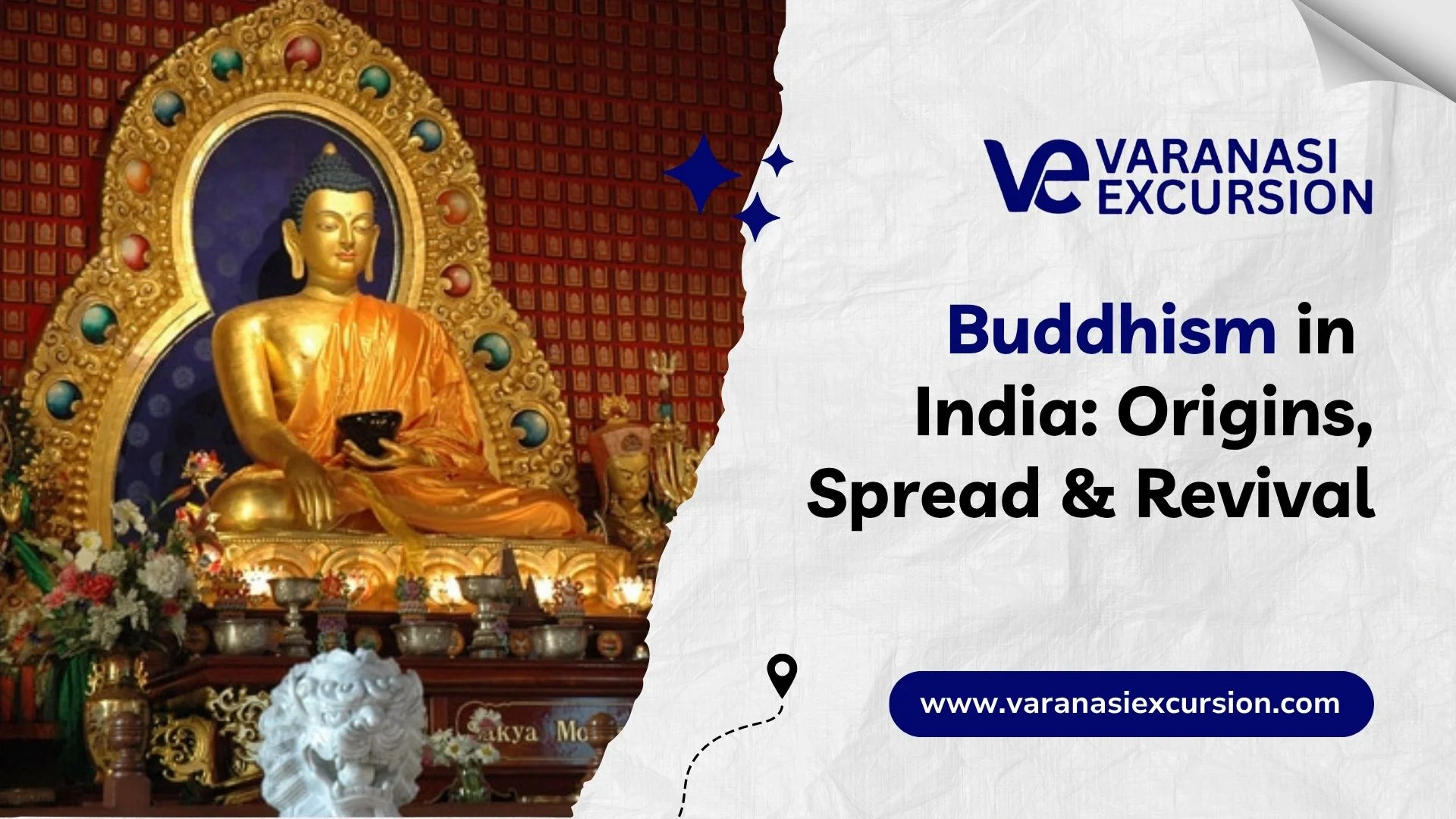When we think of Buddhism, many of us imagine calm monks in orange robes, sitting in quiet monasteries and chanting softly. But do you know where it all began? The story of Buddhism started right here in India.
More than 2,500 years ago, a kind teacher named Buddha walked on this land. He meditated under the Bodhi tree in Bodh Gaya and gave his very first teaching at Sarnath. These Buddhist places are not just old spots on India maps, they are living reminders of how one man’s search for truth became a way of peace for millions of people.
But Buddhism’s journey in India was not always smooth. First, it grew big and spread to many countries. Then it slowly declined in India, before finding life again many years later.
In this blog, we’ll (You + I) take a walk through that journey: the beginning, the spread, the fall, and the return of Buddhism in India. We’ll discover why India is still called the heart of Buddhism.
Origins of Buddhism in India
A long time ago, somewhere around 2,500 years back, there lived a young prince named Siddhartha Gautama. He was born in Lumbini (today its Nepal) in a royal family called the Shakya clan. His life was really full of comfort, joy and happiness. You know those big palaces, riches, and everything a prince could wish for.

But Siddhartha was not like other princes. From the beginning, he was curious. He wanted to know, “Why do people suffer from so many things, even when they have so much?” His father, the king, wanted to keep him happy, so he tried to hide all the sad things of a human life like sickness, old age, and death.
As a result of this he never allows Siddhartha to take a clan visit.
But one day, Siddhartha stepped outside the palace gates. What he saw changed him forever. First, he saw an old man, then a sick man, and later a dead body. For the first time, he understood that no matter who we are, everyone has to face sickness, aging, and death. But then he also saw a peaceful monk, who had left everything to search for the truth. This filled Siddhartha’s heart with a deep desire to find answers.
At the age of 29, he took a brave step called the Great Renunciation. He left behind his palace, riches, and even his family to look for the meaning of life. For many years, he meditated and lived a very simple life. Finally, under the Bodhi tree at Bodh Gaya in Bihar, Siddhartha found the truth he was seeking. He became the Buddha, which means “the Awakened One.”
And from that moment, the great journey of Buddhism in India began.
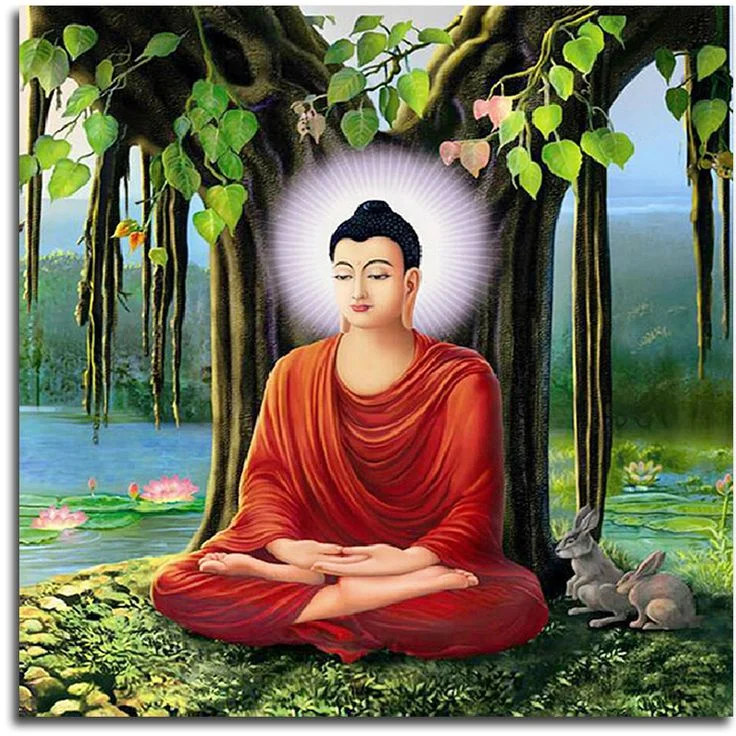
Development and growth of Buddhism in India
After Siddhartha became the Buddha, he did not keep his wisdom only for himself. That is the way of a monk, whatever knowledge or peace he gains, he wishes to share it with everyone. It is very different from many rich and powerful people today (though not all), who often hide their “secret of success” instead of helping others.
The Buddha wanted to spread peace and truth. His very first teaching was at Sarnath, near Varanasi. This moment is called the “Turning of the Wheel of Dharma.” Here, he shared two great ideas: the Four Noble Truths and the Eightfold Path. These became the heart of Buddhism.
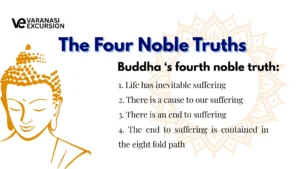

As the Buddha traveled across northern India, his message touched the hearts of many including farmers, traders, teachers, and even kings. He did not use big rituals or puzzles. Instead, he spoke in simple words: life has suffering, but peace can be found through good thoughts, kind actions, and compassion.
Slowly, people began to follow him closely. They formed a group called the Sangha where monks and nuns who left their homes to live simply and spread the Buddha’s teachings. They wore plain robes, lived on small donations of food, and carried his words from one village to another.
Over time, the Sangha held special meetings called Buddhist councils. In these gatherings, monks recited and remembered the Buddha’s teachings, making sure they were kept safe and pure. This helped Buddhism grow in an organized way.
Spread of Buddhism in India and beyond
As Buddhism grew in India, it did not stay in one place. Monks, traders, and pilgrims carried the Buddha’s teachings along busy trade routes, while kings built monasteries and stupas that became centers of learning and devotion.
Within India, the teachings traveled far: from the northern plains to the central and southern regions. Famous schools like Nalanda welcomed students from all over the country. Here, people studied, discussed, and preserved the Buddha’s message.
The biggest boost came in the 3rd century BCE with Emperor Ashoka. After the terrible Kalinga war, he gave up fighting and chose peace. Ashoka became a follower of Buddhism and spread it widely. He built great stupas, carved messages of kindness on rocks and pillars, and sent monks to faraway lands. His son Mahinda carried Buddhism to Sri Lanka, where it eventually became the state religion.
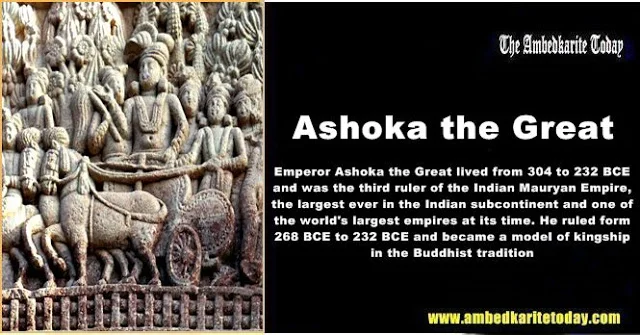
From Sri Lanka, Buddhism traveled along the Silk Road to Central Asia and China by the 1st century CE. In China, it mixed with local traditions and later spread to Korea and Japan, where schools like Zen Buddhism grew. In Southeast Asia, countries like Thailand, Myanmar, Cambodia, and Laos embraced Theravāda Buddhism, while in the Himalayas, Vajrayana Buddhism took root in Tibet and Mongolia.
Today, more than 500 million people follow Buddhism worldwide. From quiet temples in Japan to colorful festivals in Thailand, the Buddha’s teachings continue to guide lives, and it all began with one man’s search for truth in India.
Golden age and Buddhist heritage in India
Buddhism in India truly shone between the 3rd century BCE and the 7th century CE, a period called its golden age. During this time, kings and rulers loved and supported Buddhism, helping it grow like never before.
Many monasteries and universities were built. The most famous was Nalanda University, one of the world’s first centers of higher learning. Students came from all over Asia to study not just Buddhist teachings, but also philosophy, medicine, and mathematics. India became a shining center of knowledge and wisdom.

Art and architecture reached amazing heights too. Stupas, carved caves, and tall stone pillars didn’t just decorate the land, they told the story of the Buddha in stone and paint. The Ajanta and Ellora caves in Maharashtra, with their colorful paintings and sculptures, still take visitors back to the world of ancient Buddhist life.
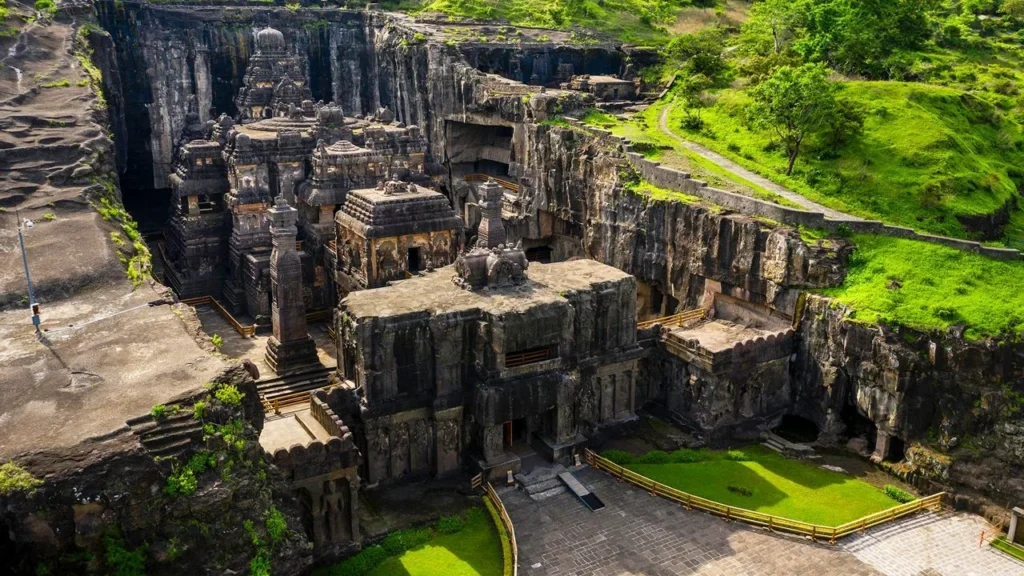
Sacred places like Bodh Gaya, where the Buddha found enlightenment, and Sarnath, where he gave his first teaching, became important pilgrimage centers. Millions of people still visit them every year.
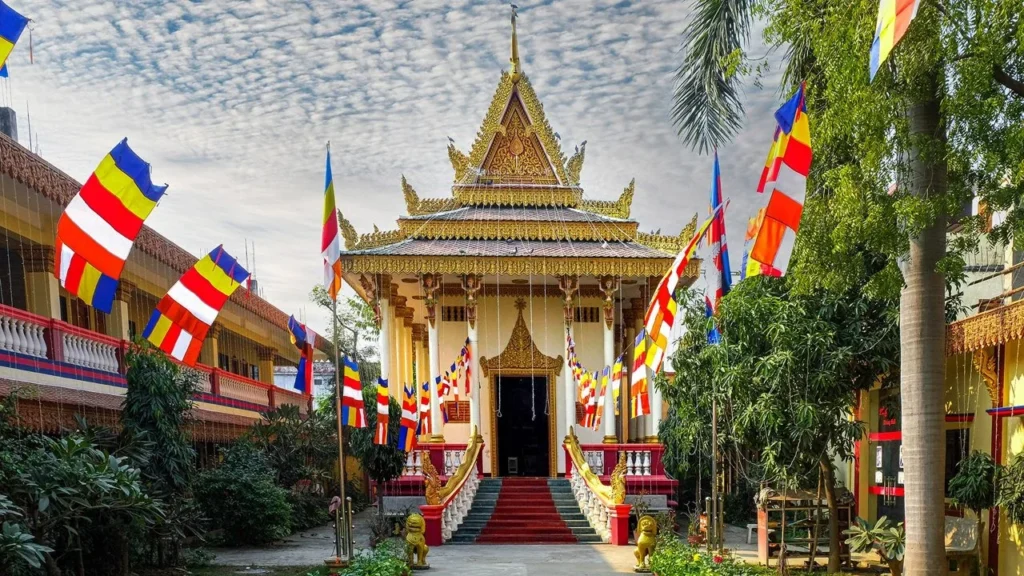
This golden age left behind a wonderful Buddhist heritage. It was not just about religion, it was about culture, art, learning, and ideas that shaped India for centuries. Even today, these treasures remind us of India’s deep connection to Buddhism.
Decline of Buddhism in India
After many centuries of growth, Buddhism in India began to fade around the 7th century CE. The reasons were many, and together they slowly caused the religion to decline.
One major reason was the strength of Hinduism, also called Sanatana Dharma. Hinduism had been part of Indian life for thousands of years, with its Vedas, Upanishads, yajnas, and yoga shaping society. Over time, Hinduism also adopted many Buddhist ideas, like compassion and meditation, so Buddhism started to feel less different. Many people gradually returned to familiar Hindu practices.
Internal divisions among Buddhists also caused problems. Different schools, like Theravāda and Mahāyāna, sometimes disagreed about teachings and practices. These disagreements made it harder for Buddhism to stay strong and united.

Another big blow came from invaders from Central Asia in the 12th century. Leaders like Bakhtiyar Khilji destroyed monasteries and universities, including Nalanda and Vikramshila. Thousands of monks were killed or forced to flee, and centuries of knowledge (books) were lost in the fires.

Without strong centers of learning, Buddhist traditions struggled to survive. Slowly, Buddhism disappeared from most parts of India, though it continued to flourish in Sri Lanka, China, Tibet, and Southeast Asia.
Even in decline, Buddhism was never completely lost in India. The dedication of monks, the wisdom kept in scriptures, and the heritage carved into caves, stupas, and temples kept its flame alive. This quiet endurance would later lead to a revival of Buddhism in India.
Revival and reformation of Buddhism in India
Even after many centuries of decline, Buddhism in India was never completely forgotten. Ancient monuments, caves, and scriptures quietly kept its memory alive. Between the 4th and 7th centuries CE, travelers from other countries, like Faxian and Xuanzang, came to India and wrote about the beauty of monasteries and stupas. Their stories reminded the world that India was where the Buddha once walked.

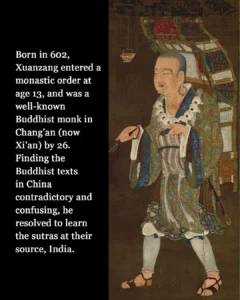
The modern revival began in the late 19th century, thanks to visionaries like Anagarika Dharmapala. He worked hard to restore sacred sites such as Bodh Gaya and inspired both Indians and foreigners to reconnect with the Buddha’s teachings.
In the 20th century, Dr. B. R. Ambedkar gave Buddhism a new path in India. In 1956, he and his followers converted to Buddhism in Nagpur, starting the Dalit Buddhist movement. For many people, Buddhism became more than a religion, it became a way to find dignity, equality, and freedom.
Since then, Buddhism has grown again in India. Monasteries are thriving, festivals are celebrated, and pilgrims from around the world visit sacred places like Bodh Gaya and Sarnath. Communities in Maharashtra, Ladakh, and the northeast actively keep the tradition alive.
This revival shows something very important: even after facing decline, the spirit of Buddhism could never be destroyed. Today in India, it continues to share its timeless message of peace, compassion, and inner awakening, and still finds new meaning in the modern world.
Buddhism in India today
Today, Buddhism in India is alive and thriving once again. From the peaceful foothills of Ladakh to the busy streets of Maharashtra, people practice and celebrate the Buddha’s teachings in many ways.
Sacred places like Bodh Gaya, Sarnath, Kushinagar, and Rajgir welcome millions of pilgrims every year. These are not just old landmarks, they are lively spiritual centers that connect India to Buddhist communities around the world.
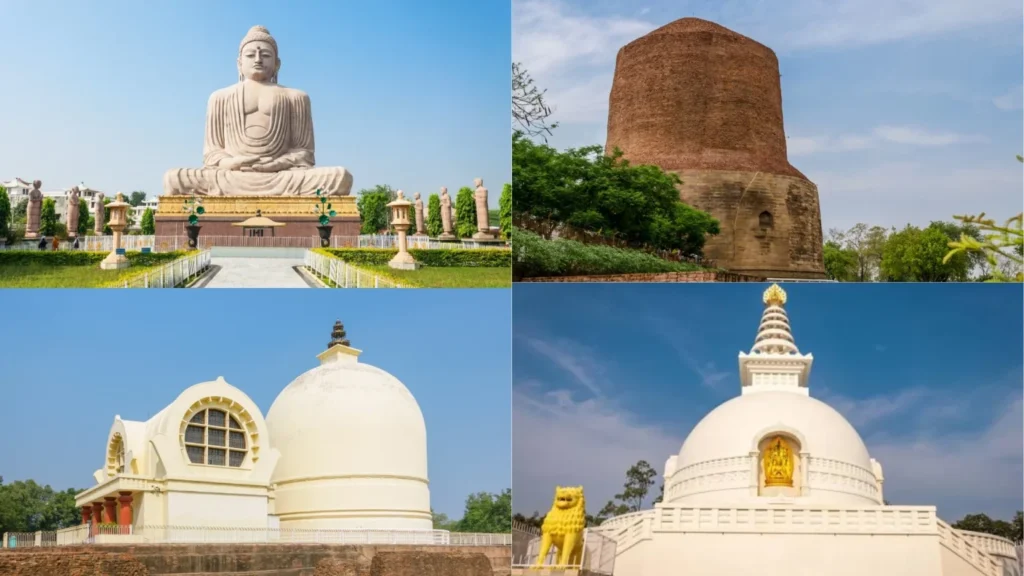
Monasteries in the Himalayas echo with the chants of devoted monks, while meditation centers across India invite anyone who wants calm, focus, and inner peace. Festivals like Buddha Purnima bring people together to celebrate the Buddha’s birth and his timeless message of compassion.
Buddhism also shapes modern life. Practices like meditation, mindfulness, and ethical living, rooted in ancient teachings, help people handle the fast pace of today’s world.
In this way, India continues to be the heart of global Buddhism. Even after centuries of decline, its revival shows that the Buddha’s message still inspires people, guiding them toward peace, wisdom, and hope in every part of life.
Buddhism in India: Ready to walk the path of peace in India?
Buddhism in India began with a curious prince who wanted answers to life’s deepest questions. His journey became a path of peace and wisdom that has guided millions of people for over 2,500 years.
Even though Buddhism once declined in India, it never disappeared. The teachings, sacred sites, and spirit of the Buddha still thrive. From Bodh Gaya to Sarnath, India remains the heart of Buddhist heritage, where pilgrims and seekers walk the same paths, keeping the flame of peace alive.
Buddhism in India is not just history, it’s a living tradition. It invites you to explore mindfulness, compassion, and inner awakening in the very places where it all began.

If you’re ready to experience this journey yourself, Varanasi Excursion offers carefully planned Buddhist tours in India.
Choose from our 7-day private Buddhist tour or 10-day Buddhist pilgrimage packages, visiting sacred sites like Bodh Gaya, Sarnath, Kushinagar, and Lumbini. You can even customize your trip, whether it’s a short retreat or a longer spiritual journey.
Step into the footsteps of the Buddha. Explore India’s rich Buddhist heritage and create your own journey to peace with us.
📩 Contact us today to plan your Buddhist journey with Varanasi Excursion, or call us at +91 9005104999.
FAQs about Buddhism in India
Where did Buddhism start in India?
Buddhism actually started in India way back in the 6th century BCE, in what’s now Bihar and Uttar Pradesh. It all began with Prince Siddhartha Gautama, who later became the Buddha. He sat under the Bodhi tree in Bodh Gaya and reached enlightenment, that’s when Buddhism was born.
From there, he started teaching Dharma, which is all about compassion, non-violence, and ending suffering. And that’s how it all began, shaping millions of lives even today.
Why did Buddhism decline in India?
Well, after growing for centuries, Buddhism started to fade between the 7th and 12th centuries CE. One reason was that Hinduism became stronger again, and many rulers promoted Hindu temples and traditions. Also, there were invasions from groups like the Huns and later Islamic rulers, who destroyed important monasteries like Nalanda and Vikramshila. But don’t worry, Buddhism didn’t disappear. It just moved and continued to grow in other parts of Asia.
Which emperor helped spread Buddhism the most?
That would be Emperor Ashoka from the Maurya dynasty, around the 3rd century BCE. After the Kalinga War, he gave up violence, became a Buddhist, and dedicated his life to spreading peace. He built stupas, pillars, and monasteries across India, and even sent missionaries to places like Sri Lanka, Nepal, and Central Asia. Basically, thanks to him, Buddhism went far and wide.
What are the most famous Buddhist heritage sites in India?
India is full of incredible Buddhist sites. The big ones are Bodh Gaya in Bihar (where Buddha became enlightened), Sarnath in Varanasi (his first sermon), Kushinagar (where he passed away), and Lumbini (his birthplace, now in Nepal, but part of the Buddhist circuit). There’s also Nalanda University, the Ajanta and Ellora caves, and Sanchi Stupa. Visiting these places really shows how rich India’s Buddhist heritage is.
How is Buddhism coming back in India today?
The modern revival started in the 20th century, led by people like Dr. B.R. Ambedkar. He inspired millions, especially from marginalized communities, to embrace Buddhism. Today, Buddhism is alive through festivals, meditation retreats, pilgrimages, and academic studies. Even the government has set up the Buddhist Circuit to preserve heritage and promote tourism. So, it’s not just history, it’s a living tradition that still spreads peace and compassion.

